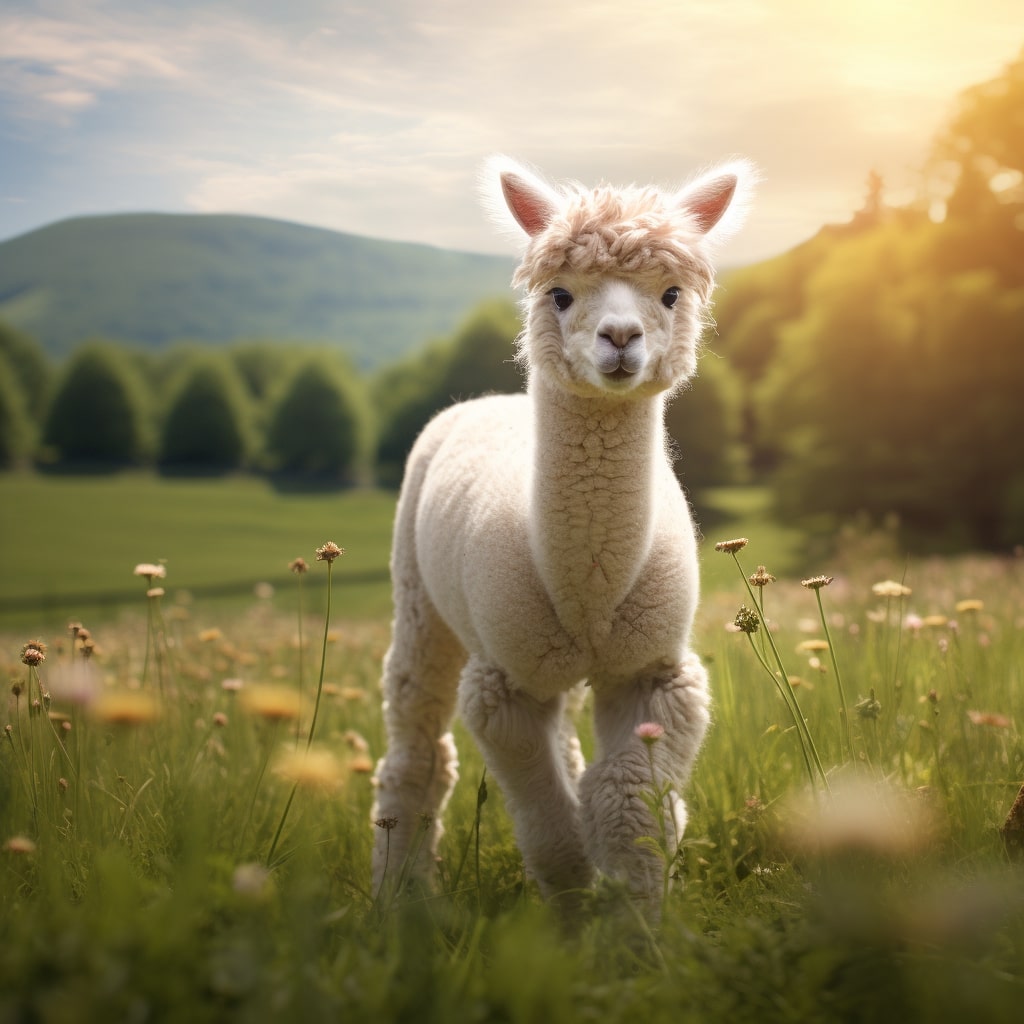Reproduction in alpacas can occur at any time of the year, but breeders typically establish specific periods for births. The chosen periods for breeding are the warmer months to allow alpaca calves to better prepare for winter.
How alpaca reproduction occurs
Female alpacas do not have a cycle like other animals, having induced ovulation, which means they are always ready for reproduction. Non-natural reproductive methods such as artificial insemination cannot be used since alpaca mating lasts up to 40 minutes, involving continuous ejaculation of small doses of semen into the female.
Females are generally ready for reproduction after reaching 12 months of age and a body weight of 45 kg. Males are ready to reproduce around 25-30 months of age, but this is just an indicative figure. Gestation lasts from 350 to 370 days, and female alpacas give birth to one calf per year. The chances of having twin births are low but still possible.
Births typically occur without complications, but it is always advisable to be present and ready to intervene if necessary. Most alpaca births happen in the early morning or during the warmer hours of the day. The newborn calf, called a Cria, seeks its mother’s milk within an hour or two. Females are ready for another mating about 20 days after giving birth.
It is crucial to perform pregnancy tests and meticulously follow all stages of pregnancy through to the birth and care of the Cria.


Reproduction techniques
Various reproduction techniques are used by breeders:
There is also the option of taking females to a breeding facility where breeding males are present, and mating will occur using one of the above methods.
- Placing a male in a flock of females for months;
- Placing a female in a pen with a male and leaving them together for several days;
- Introducing a male to a pen where a female is present, and if the female accepts the male, she will “sit” and mating will occur;
‘Embryo transfer
Embryo transfer is a technique that allows the implantation of an embryo from a high-genetics female into another female of lower genetics. This technique maximizes the reproductive capabilities of the female. Using this technique, a female alpaca can reproduce multiple times a year by transferring her embryos to females with inferior genetics.
